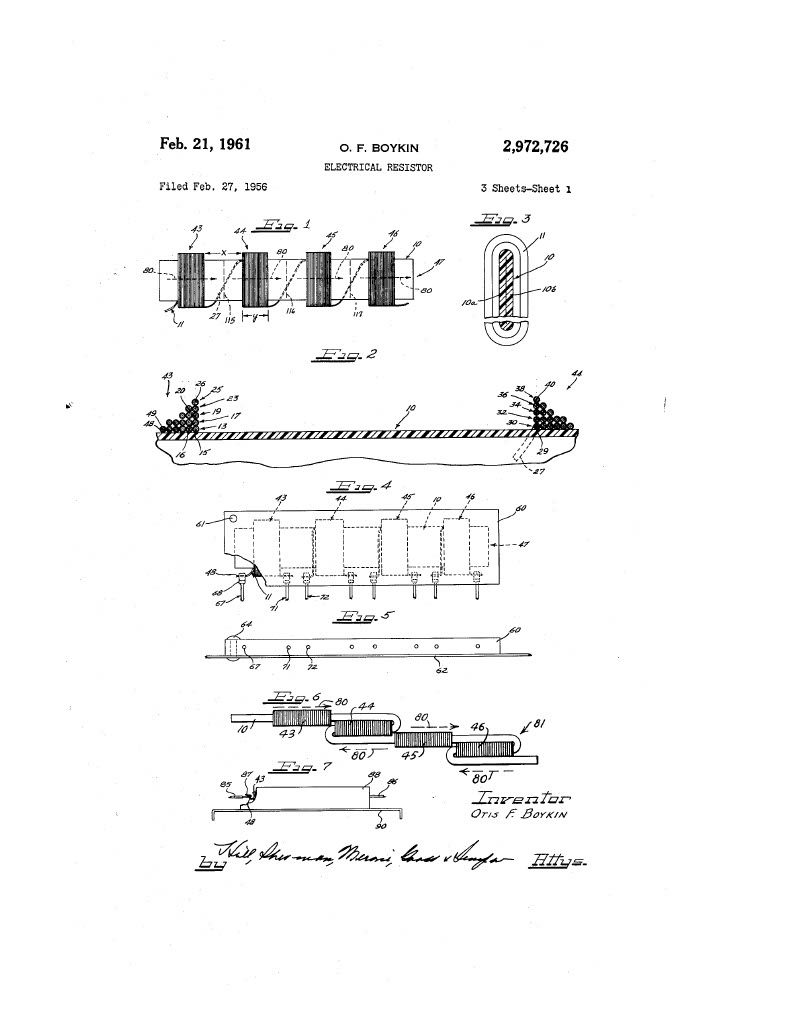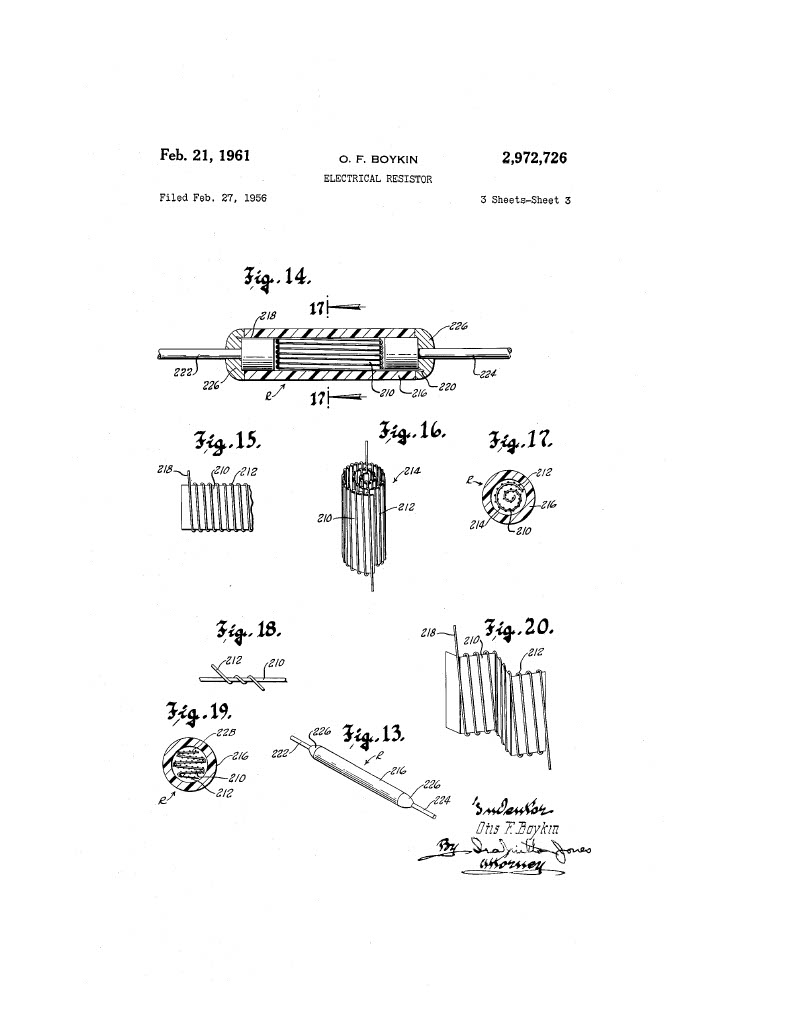February is Black History Month, and we want to take some time to highlight the work of black scientists and engineers whose work influences our industry and the world around us. Today we want to tell you about Otis Boykin, an engineer and inventor who holds numerous patents for electrical components, including one for the wire precision resistor!
Otis Boykin was born in Dallas, Texas in 1920 to a working class family and graduated high school in 1938 as valedictorian of his class. He then began college at Fisk University in Nashville while also working at an aerospace laboratory as a lab assistant testing automatic controls for aircraft. After graduating, Boykin moved through a few laboratory jobs working on radio and TV components. He even ran his own company with Hal Fruth, another engineer he met while working as a clerk for a manufacturing company. There, he worked on his own various inventions beginning in 1946. Boykin holds 26 patents, but the one he is best known for is the wire precision resistor.
Boykin working at CTS Corporation. Photo: CTS Corporation
Resistance was a known electrical property since German electrician Georg Simon Ohm noticed that different materials allowed current to flow through them differently in 1827, creating Ohm’s Law (V = IR). Resistance is needed in circuits to control the flow of current, but early resistors weren’t the most reliable, and using them in mass production was prone to error.
Otis Boykin earned his first patent when he developed the wire precision resistor in 1959. This type of resistor made it possible for manufacturers to accurately select a resistance value for an individual segment of wire in electronic circuits and components. In 1961, he earned another patent for an improved version of this concept. It was described as an affordable and easily manufactured electrical resistor that could “withstand extreme accelerations and shocked and great temperature changes without change or breakage of the fine resistance wire or other detrimental effects.”



US Patent No. 2,972,726 for the electrical resistor, filed by Otis Boykin
His invention simultaneously cut the cost of producing electronic devices and made them much more reliable. This improvement to the design of the resistor had many applications, from transistor radios and televisions to IBM computers. However, one of the most well known applications of this component is the control unit of the implantable pacemaker.
Pacemakers use electrical stimulation to keep the heart beating at a steady rate. Early pacemakers had to be plugged into a wall to be used or worn externally and operated off battery power, and the first one weighted over 15 lbs. Being reliant on external sources for power could be fatal in cases of power failure, and one that ran off internal power could be life changing for patients everywhere.
The evolution of the artificial pacemaker.
Boykin’s contributions to creating a reliable resistor that could last over time, fit into a compact space and use power more efficiently is the reason why many people with pacemakers today can live normal lives without being plugged into a wall or a battery at all times.
Throughout his career, he patented 26 electronic devices. His inventions include the electrical capacitor, an electrical resistance capacitor and multiple consumer products, including a burglar-proof cash register and a chemical air filter. He passed away in Chicago at the age of 61 due to heart failure. He is credited with saving innumerable lives due to his contributions to cardiac medicine, and his legacy lives on in everyone affected by his inventions.
Want to learn more about how to use resistors in your own circuits? Check out this tutorial below.
Resistors
April 1, 2013
A tutorial on all things resistors. What is a resistor, how do they behave in parallel/series, decoding the resistor color codes, and resistor applications.
Stay tuned throughout the rest of this month to learn about more black scientists and engineers whose life and work deserve celebrating, and let us know who has inspired you on Twitter, Instagram, Facebook or LinkedIn!













